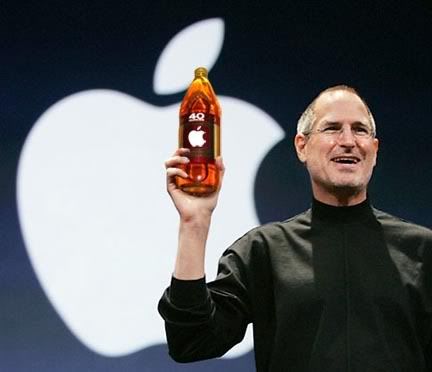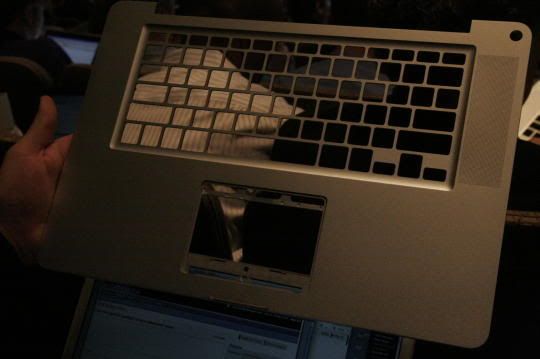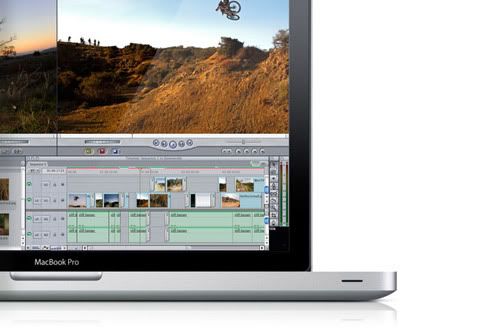
As some of you probably heard Apple is about to unveil a new laptop. I'm here with my Macbook now and have no need, but trust me.............if I wasn't I'd be clicking my heels right now......Mirrored keyboard, wha!!!!$$?!!


Tuesday's announcement of new and updated MacBook laptops from Apple could never have lived up to the hype of the past several weeks.
After endless predictions about tablets, touch screens, and cheaper (some would say recession-friendly) products, from an $800 MacBook to an Apple Netbook, the end result was instead a solid list of upgrades and improvements, with a few noteworthy innovations and a few interesting developments that may get lost in the "Where are the $800 MacBooks?" shuffle. Here's our take on what the new developments mean for you.
The new "brick" body construction.
(Credit: James Martin/CNET News)
The most obvious of these is the so-called brick manufacturing process, whereby instead of building a frame and overlaying the chassis, Apple is taking the process used in the making the MacBook Air and expanding it to other MacBooks. The brick comes from a 2.5-pound piece of aluminum (in the case of the Air), which is literally whittled down to 0.5 pounds, meaning the internal frame is part of the same piece of metal as the chassis.
We were impressed with the build quality of the MacBook Air, and hearing that it's made of few individual pieces than other laptops makes sense. But the 13- and 15-inch systems always seemed plenty sturdy to us, so we're not sure if this will be a big selling point for casual consumers.
While switching to Intel CPUs a couple of years ago was a huge breakthrough in terms of mainstream appeal for Macs, Apple is moving away from Intel motherboard chipsets in favor of a new one from Nvidia.
The GeForce 9400 M combines a chipset and GPU, which will hopefully be a big improvement over the Intel integrated graphics found in most MacBooks today. It certainly won't match dedicated gaming laptops (and Mac gaming is still in a sorry state), but we've long decried the sad state of integrated graphics, and in fact, have long given up on finding a decent 3D gaming test to run on systems with integrated graphics. (Note that a dedicated 9600M GT graphics card--with either 256MB or 512MB of graphics memory--will be available in the MacBook Pro.)
The revamped MacBook Pro will come in 15- and 17-inch sizes.
(Credit: James Martin/CNET News)
Multitouch gestures aren't exactly new--we've seen them on the MacBook Air, and they were added to the last round of MacBook Pro upgrades. But one of the biggest physical changes to the new Apple laptops is the inclusion of what is being called a "multitouch glass trackpad."
We got quite used to using gestures on the Air (as well as the iPhone and iPod Touch), and the idea of a bigger (reportedly 39 percent) touchpad is always a good idea--too many PC makers include tiny touchpads that require several swipes to get your cursor across the screen. The big questions are: Will software makers take advantage of it? And will users get used to not having a physical button to click?
Manufacturing process aside, the actual silhouettes of the systems aren't changing much--some observers were hoping for a more radial re-imagining. The MacBook Pro, for example, looks substantially similar, with minor changes to the ports (Mini DisplayPort) and other features (battery meter on the side, easier-to-access hard drive bay).
The MacBook Air likewise looks physically the same, but adds a 128GB SSD option (Sony's got an ultraportable Vaio with a 256GB SSD and an optical drive), and a Mini DisplayPort. We had hoped Apple would take this opportunity to really revamp the Air, which is a product people love conceptually, but are less fond of in real-world applications.
The new aluminum 13-inch MacBook looks just like a shrunken-down MacBook Pro and costs $1,299 or $1,599.
(Credit: Apple)
It may not be $800, but reducing the entry-level price for the regular 13-inch MacBook to $999 is a smart move, and crosses an important psychological barrier. But we can't imagine too many people will want the old white plastic design (couldn't they have at least made the $999 model black?) after they see the sleek new metallic version--which looks just like a shrunken-down MacBook Pro (and costs $1,299 or $1,599). Note that the $999 model also lacks the new Nvidia chipset, the glass trackpad, and the edge-to-edge glass-covered display seen on the new Pros and more expensive 13-inch models.
Also interesting to note is that 128GB SSD drives will be available in both the 15-inch and the aluminum 13-inch models, although they'll likely have a hefty premium.
The final word goes to CNET laptop editor Matt Elliott, who says, "They'll sell a lot more MacBooks and fewer Pros."
We'll be bringing you new reviews, videos, benchmarks, and hands-on impressions of the new MacBooks later this week, so stay tuned.- courtesy Dan Ackerman



No comments:
Post a Comment